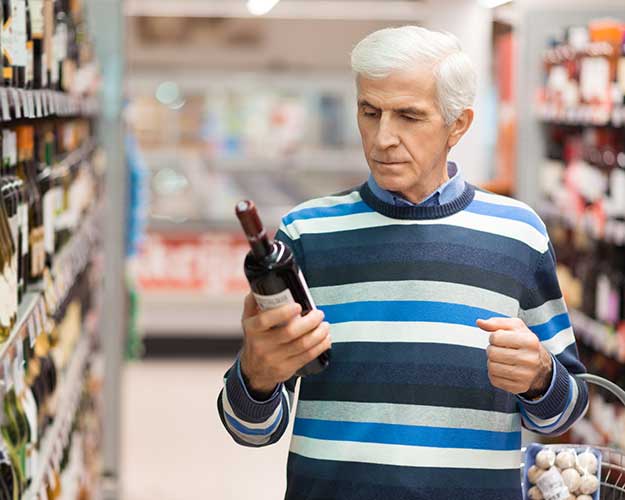warning labels on alcohol increase awareness about potential health risks
Smoking, excess body weight and alcohol consumption are the leading risk factors for cancer – and the most preventable, according to the American Cancer Society. While this information is well known to healthcare professionals, the U.S. Surgeon General recently recommended that warning labels be placed on alcohol products to help make more Americans aware of the relationship between alcohol consumption and increased cancer risk.

A Closer Look
Faye Yin, MD, medical oncologist and hematologist with Florida Cancer Specialists & Research Institute (FCS), notes that alcohol is a contributing factor associated with approximately 100,000 cancer cases and 20,000 cancer deaths every year, playing a role in breast, liver, colorectal, mouth, throat, esophagus and voice box cancer cases. “This is a serious health concern that needs to be addressed,” says Dr. Yin.
“Ethanol is the ‘alcohol’ portion in beverages, found in beer, wine and liquor spirits,” explains FCS Clinical Oncology Dietitian Rhone Levin, MEd, RON, CSO, LON, FAND. “When the body breaks down ethanol, there is production of a compound called acetaldehyde, a known cancer-causing agent that can directly damage DNA and encourage the development of cancer cells.”
Carrying extra body weight can also increase the risk for many of the most common cancer types, as well as cardiovascular disease, type II diabetes and other diseases.
Excess body weight, particularly visceral fat around the organs, can cause chronic inflammation, which can ultimately damage DNA and promote tumor development. Essentially, the more fat cells present, the higher the potential for abnormal cell division and cancer growth.
How can warning labels help?
In 1965, the Federal Trade Commission required that warning labels be placed on cigarette packages to educate consumers about the health risks of smoking. Research studies have shown that warning labels, especially those with graphic images, have helped to increase awareness and alter behaviors.
Similarly, Levin notes that nutrition labeling, which became mandatory in the U.S. in 1990, helps people understand how a food or beverage may impact their health and can lead to better choices. “For example, knowing what portion constitutes a serving of food or beverage is valuable information in managing diet quality,” she said. Levin expects that warning labels on alcohol can be similarly helpful in heightening awareness about potential health risks, and Dr. Yin agrees.
Contact Us
Beyond labels –
How to reduce your cancer risk
The Surgeon General’s call for warning labels has definitely brought the topic of preventable cancer risks to the forefront for a lot of people who may not have been aware of the risks. Ongoing research continues to expand our understanding of cancer-related processes in the body and offers exciting opportunities for breaking the link.
The increased risks associated with alcohol consumption are related to how much and how often a person drinks. The 2020-2025 U.S. Dietary Guidelines state that for adults who choose to drink alcohol, women should have one drink or less in a day and men should have two drinks or less in a day. Dr. Yin says the risk increases even at low levels of consumption (less than one drink in a day).
“There is no ‘safe’ level of consumption,” according to Levin. “That said, it makes sense to reduce the number of alcoholic beverages we consume at any one time and to reduce the frequency of consumption.” Levin points to positive trends, such as the growing observance of “Dry January” and “Damp January,” when people purposefully decrease alcohol consumption. “Additionally, a growing number of restaurants and bars are creating a significant variety of ‘mocktails’ made with premium nonalcoholic ingredients,” she said.
When it comes to diet, the most impactful changes people can make to reduce the risk of cancer and other diseases are to include more plant portions on a regular basis. Levin says, “As you increase the portions of filling, high fiber, low-calorie, dense vegetables and fruits, it is easier to eat smaller portions of the higher-calorie menu items. Cutting calories while feeling full is a great way to manage your weight.”
The American Institute for Cancer Research, which Levin cites as “the gold standard for reliable, evidence-based guidelines for cancer and all disease prevention,” offers a free online Cancer Health Check and a Healthy1O Challenge. To learn more about how the choices we make each day can help reduce our risk for cancer, visit www.aicr.org.





Comments